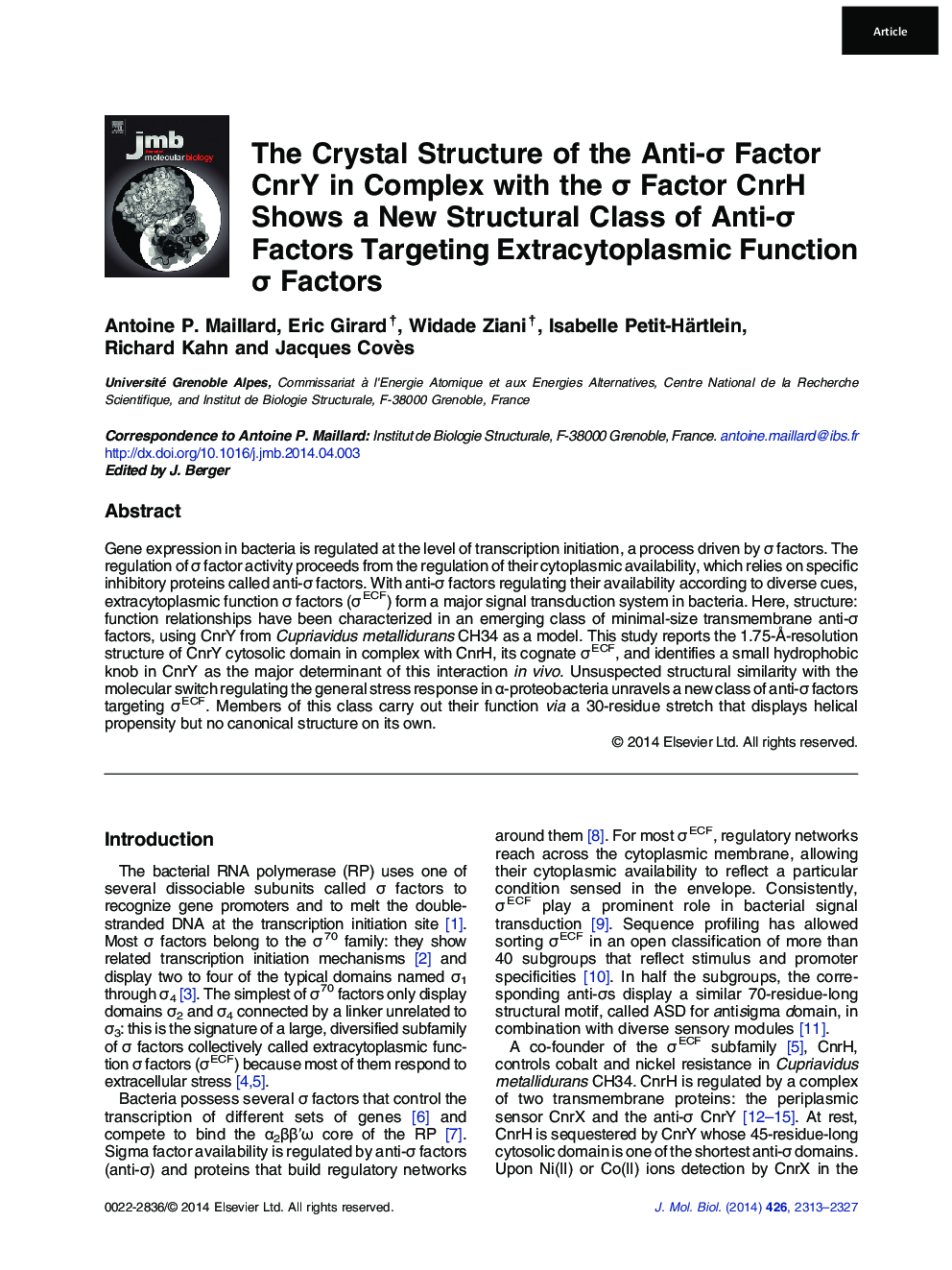| Article ID | Journal | Published Year | Pages | File Type |
|---|---|---|---|---|
| 2184633 | Journal of Molecular Biology | 2014 | 15 Pages |
•The CnrYXH complex is the founding member of a family of metal-sensing devices.•Structure of the σ:anti-σ complex CnrH:CnrY was determined at 1.75 Å resolution.•A single hotspot mediates CnrH:CnrY interaction in vivo.•CnrY is a prototype for a new class of short, intrinsically unfolded anti-σs.
Gene expression in bacteria is regulated at the level of transcription initiation, a process driven by σ factors. The regulation of σ factor activity proceeds from the regulation of their cytoplasmic availability, which relies on specific inhibitory proteins called anti-σ factors. With anti-σ factors regulating their availability according to diverse cues, extracytoplasmic function σ factors (σECF) form a major signal transduction system in bacteria. Here, structure:function relationships have been characterized in an emerging class of minimal-size transmembrane anti-σ factors, using CnrY from Cupriavidus metallidurans CH34 as a model. This study reports the 1.75-Å-resolution structure of CnrY cytosolic domain in complex with CnrH, its cognate σECF, and identifies a small hydrophobic knob in CnrY as the major determinant of this interaction in vivo. Unsuspected structural similarity with the molecular switch regulating the general stress response in α-proteobacteria unravels a new class of anti-σ factors targeting σECF. Members of this class carry out their function via a 30-residue stretch that displays helical propensity but no canonical structure on its own.
Graphical abstractFigure optionsDownload full-size imageDownload high-quality image (113 K)Download as PowerPoint slide
